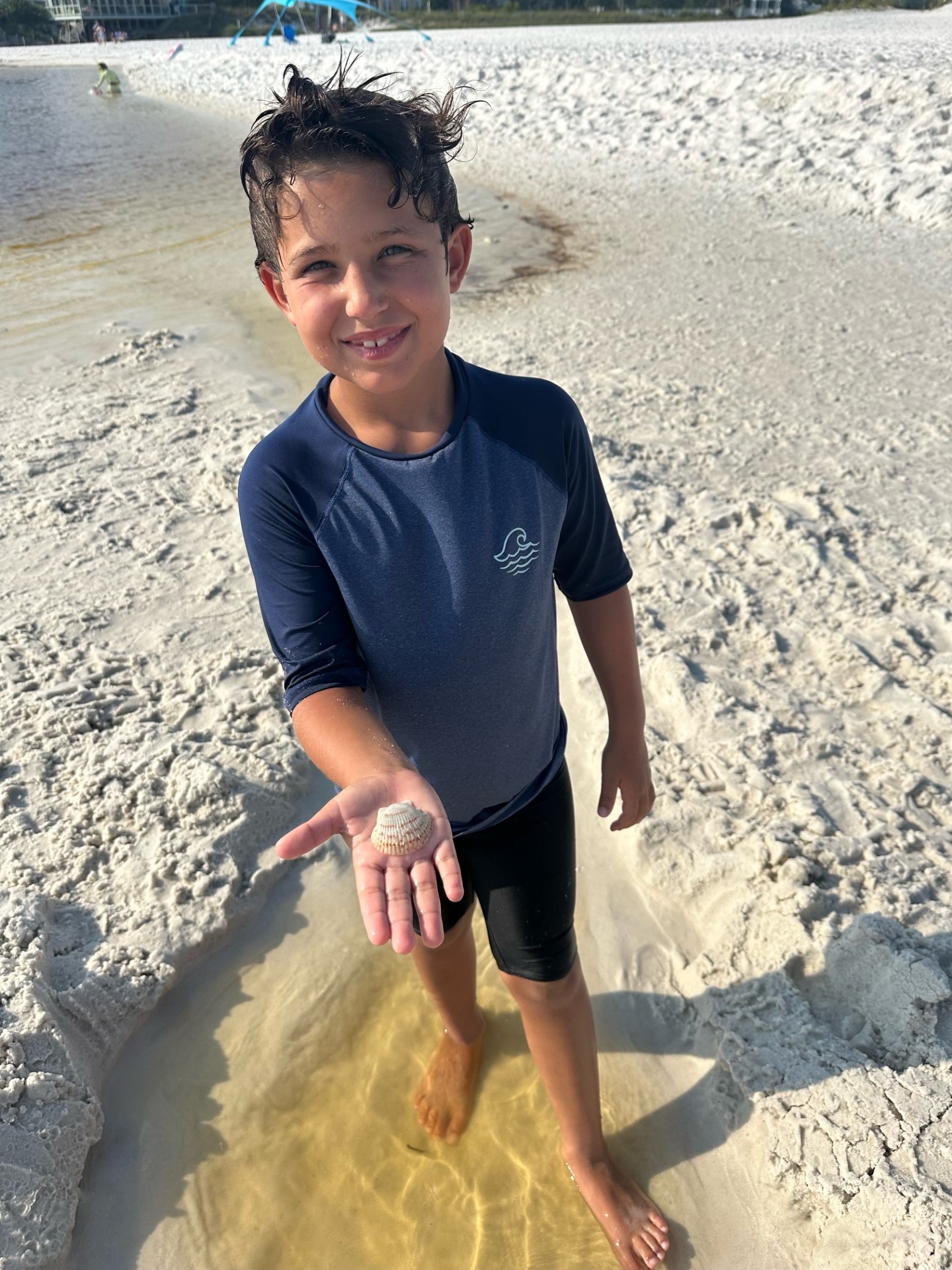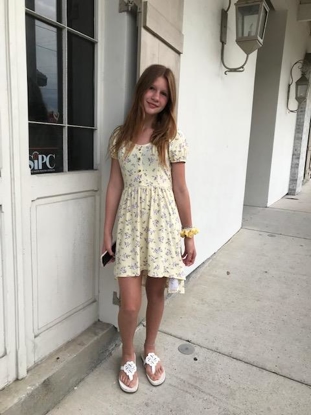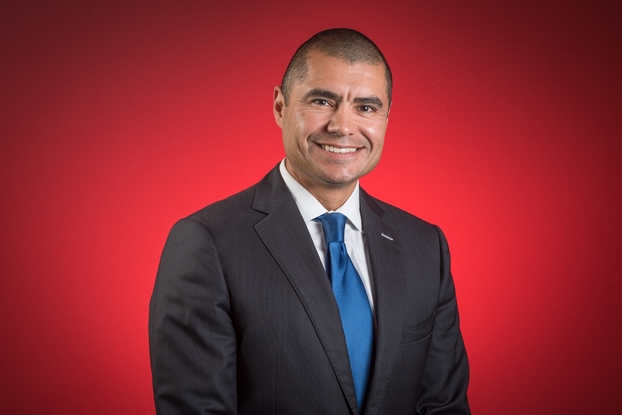On the Move, On His Own Terms After Epilepsy Diagnosis, Hayes Tate Says There’s Nothing He Can’t Do
- Category: Living Well, Patient Stories, Keep Kids Well
- Posted on:
.jpg)
Make no mistake about it. Hayes Tate, a 10-year-old boy who is active in soccer, flag football, golf and swimming, hasn’t had an easy go of it. He appeared to lead a typical life in his first six years, vibrant and active.
Sure, he had febrile seizures at 15 and 18 months. But many young children suffer from seizures when they get sick and have a high fever. No one, not even his doctors, thought much of it. The family struggled to manage the postictal phase of the seizures – the sleepy, lethargic state children experience post seizure. Rushing to the hospital and waiting was not easy. .jpg)
Funny, precocious Hayes “came back” after a bit and “we just moved on,” his mom explained.
When Hayes had a third febrile seizure, this time at age 3, his parents, Carolina and Eric, became more concerned. “Febrile seizures are common in children under 5,” Carolina remembers hearing. “We were hopeful that they would stop. But something wasn’t right. We knew it. And by the time Hayes was in kindergarten and first grade, we weren’t sure what was going on but we knew it wasn’t normal.”
When Hayes was 7, it was clear the problem was far less common than febrile seizures. Again, Hayes experienced a seizure while suffering a high fever, but this time the postictal phase lasted almost two hours.
During the same time period, homework was taking up to three hours to complete every night. Hayes’ teachers were in contact with Carolina often. They reported that Hayes seemed to “check out” for a few seconds at a time – often mid-sentence – and then “reboot.”
Carolina, a staff nurse at a surgery center, and Eric, owner of a general contracting business, took the advice of their pediatrician, to get another opinion about what was going on with Hayes. He also ordered an electroencephalogram (EEG). An EEG measures electrical activity in the brain and helps physicians diagnose brain conditions including epilepsy.
At Last...a True Diagnosis
That’s when Thibodaux, La. residents Carolina and Eric brought Hayes to CHNOLA, where they met with pediatric neurologist and epileptologist Dr. Daniella Miller, who gave them news they could use. Hayes’ EEG showed that he had epilepsy and was suffering from myoclonic seizures. These are seizures characterized by brief involuntary jerks of the muscles lasting less than one second, sometimes occurring in a cluster. Due to the subtle nature of the events, it was nearly impossible for an outside observer to detect the seizures. Along with the muscle jerks, the seizures were also causing disruptions in his brain which made it hard to perform in school. This is why Hayes was struggling in school, as well.
“We never noticed Hayes was having clusters of seizures until we were able to see the activity on video during the EEG,” Carolina said. “All of a sudden we were able to really see what was happening. It turns out he was having many myoclonic seizures per hour and we just never knew. My ‘momma heart’ wants to believe that he didn’t have this type of seizures from the beginning,” Carolina said. “Could it be that he was always running around being a normal kid and I didn’t know? But truly, there is no way to know.”
Dr. Miller initiated anti-seizure medication, and after several adjustments along with repeat EEGs to assess for improvement, Hayes was finally able to find a combination that worked. Hayes continues to see Dr. Miller every six months to check in and does yearly EEGs to make sure his medication is titrated correctly. 
“I have a very special relationship with Hayes,” Dr. Miller says with a smile. At just 7 years old, he displayed remarkable maturity, actively participating in his own care by reporting his seizures and expressing his opinions about side effects. Together with Hayes, his dedicated parents and myself, we formed a cohesive team, collaborating to refine and implement the most effective treatment plan.” And, as long as Hayes stays on the medication to manage his myoclonic seizures, and he remains seizure-free, he should be able to do anything he wants – including getting his driver’s license someday.
‘She made me feel really comfortable.’
In between soccer and homework, Hayes stopped to talk about Dr. Miller and the care he has received. “She was super nice from the beginning. She made me feel really comfortable,” Hayes said of the physician who put a diagnosis on his condition and set him on the road to optimal epilepsy management.
Looking back to his early visits at CHNOLA, Hayes admits that he was worried at first; he didn’t know if the tests would hurt. He said he was concerned that no one would pay attention to him and just talk to his parents.
“Some doctors walk in and I talk to them. They ask me questions like, ‘Do you feel like the medicine is working?’ I always say ‘yes,’” Hayes said. “I feel like I can control my body more. My body doesn’t move by itself anymore.”
Mom said she was worried, too. “My ‘mom fears’ were real. I wondered if my child was going to suffer. Would these seizures stop him from doing the things he wants to do? Would the meds change his personality? Were we going to lose how funny and happy he is? Would we lose the Hayes we knew?”
Turns out, all the concern was for naught. “Dr. Miller has been amazing for us. She has been an angel. She explained everything and helped us get through this journey. She helped us stay the course, which wasn’t easy a lot of the time,” Carolina said. “Dr. Miller has been so kind and patient.”
Hayes agreed wholeheartedly: “Dr. Miller makes me feel like I am a normal kid and not just a hospital patient.”
When he is not out on a field with a ball or playing with his sister Mila, 5, or brother, Charlie, 11, Hayes loves science and watching television. He said he wants to work with sea animals. “Maybe I’ll be a conservationist like Steve Irwin,” he said. “Or maybe I’ll be a vet.”
Hayes said he can do whatever he wants to do – as long as mom, Carolina, gives the thumbs up. “I love flag football but I really want to play tackle football,” he said. “I’m always bugging my mom about it. She says maybe in 7th grade. That’s three years from now!”
Words from the Wise
Hayes said that he didn’t know what was wrong all those years as he was suffering from the myoclonic seizures. But he does know one thing and he wants to make sure other kids know it, too. “If you are constantly moving and doing stuff and saying ‘I didn’t mean to do that,’ you should really go get tested to see if maybe they have epilepsy like me.
“If you do have seizures and you go to CHNOLA, don’t feel scared,” Hayes continued. “You have to pay attention and become friends with the doctors so you can answer their questions and they can help you.”
Contact CHNOLA’s Neurology Department to make an appointment with a specialist who treats epilepsy and other brain conditions by calling: 504.896-2888.



